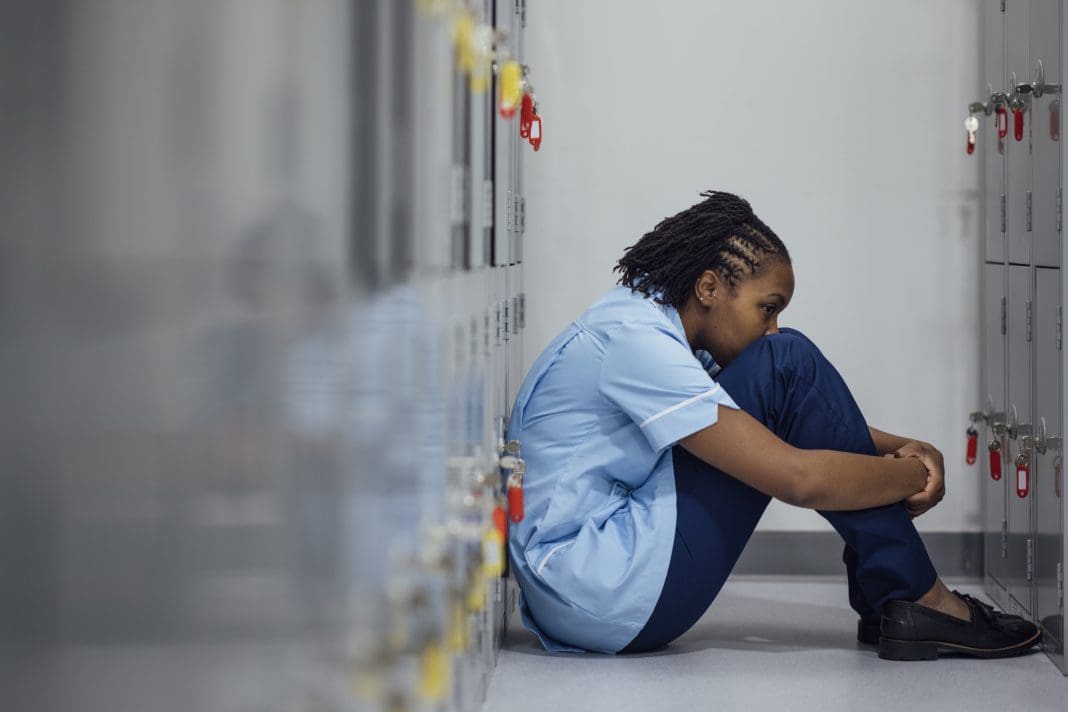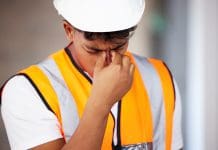Pick Everard director Devika Parmar discusses why purpose-led design would help alleviate issues faced by NHS staff, delivering vital mental and physical spaces during one of the most critical periods in the institution’s 76-year history
Burnt out and undervalued is the consensus among industry-wide reports investigating issues with NHS staffing within hospitals. With a review of the new hospitals programme taking place, alongside a stark assessment of the NHS’s need to reform before further funding is applied, the picture for staff prospects and their workloads remains bleak.
In England, the NHS employs around 1.5m people, with 1.3m on an FTE basis. These figures have steadily increased for more than a decade, with data from NHS England showing an employee count of 1.1m in 2009.
Combined with this, there are an estimated 600m patient interactions per year across NHS services, equating to 1.7m interactions each day. While further analysis reveals a myriad of complex wellness, access, and stress-related issues, it is clear to see from these baseline statistics that NHS staff are some of the most in demand in the world, as well as operating in a pressure inducing, high-risk environment.
Stress and burnout are, sadly, nothing new within healthcare. In fact, burnout was first described as an occupation phenomenon in healthcare workers in 2019, when the World Health Organisation (WHO) defined it as feelings of being depleted and exhausted, difficulty concentrating, reduced professional efficacy, job cynicism, and being critical of one’s work.
The most recent set of issues are somewhat linked to the long-lasting ramifications caused by the pandemic. In June 2021, a report from the House of Commons Health and Social Care Committee concluded that NHS staff burnout is a widespread reality today. Staff burnout and sickness doubled to five per cent between March 2020 and June 2021, while the impacts of family and loved ones not being able to visit care settings during lockdowns were also stated to have taken their toll on the mental health of staff.
Adding to matters, many staff took on additional voluntary roles during the pandemic, including covering COVID-19 vaccination centres on their days off, for example. While admirable, the potential negative impacts on staff wellbeing are clear to consider.
NHS staff burnout research fulfilment
As architects in this space, it is our role to learn more about NHS staff burnout, wellbeing, and how thoughtful, purpose-led design can help alleviate some of the pressure faced by NHS staff every working day of their lives.
This starts by absorbing as much research as possible while integrating and practicing design techniques that have theoretical grounding in aiding staff wellbeing.
At this year’s European Healthcare Design Congress, it was reported that both ‘health’ and ‘work-life balance’ factors were two of the most critical in a steady rise in voluntary resignation numbers within the NHS. Crucially, 87% of NHS staff reported that they feel their role makes a difference to service users, but what happens when staff feel impeded or the notion of undertaking their role is impeded by daily inadequacy?
Such inadequacies could be heavy workloads, which place a mental toll on staff care and individual patients. It could also be interlinked physical/mental health matters, with staff unable to utilise dedicated break rooms or utilise their tablet devices for fear their intentions may be misunderstood as not prioritising patient care.
There are also design matters impacting health and wellbeing priorities that are out of control for designers.
Hospitals are sterile environments which are designed, first and foremost, with patient care and infection control in mind. This means vinyl surfaces for easy cleaning, but not necessarily with acoustics or comfort in mind, particularly when walking or standing for long periods of time. Colour palettes are also naturally cold, particularly in corridors to ensure wayfinding and uniformity is prioritised over any quirks in design. There are also factors such as artwork which, while stimulating the mind, are not allowed due to the strict enforcement of cleanliness procedures.
Design notions
Where we can operate, however, is within dedicated staff areas. Enforcement of breaks is ultimately a staff issue, but where we can prioritise the needs of staff and help alleviate workload pressure is through considerate design. While functionality is perhaps the overriding factor within patient areas, there is a degree of flexibility when it comes to material and design choices in staff environments.
Certainly, the notions of biophilic design in aiding staff wellbeing are well discussed within several built environment sectors, and healthcare is no different in the way that a connection to nature can help relieve stress in pressured environments.
Presently there is no requirement for architects and designers to implement principles of biophilic art and design into healthcare settings, although it has been seen within several NHS environments, including Royal Brompton and Harefield Hospitals and its new Diagnostic Centre in 2022. Many academic studies cite a reduction in patient recovery times in biophilic environments, indicating there should be more of a directive to implement it within hospital settings wherever possible.
Similarly, and harking back to measures that have lasted since the pandemic, the use of ‘wobble rooms’; dedicated areas with arts, crafts, and wellbeing resources for staff to utilise during periods of high workload intensity, have been said to reduce emotional distress in users by 50%. By adding to these areas with visual privacy, acoustic barriers, and soft furnishings, NHS staff can have contrasting environments to the often sterile, pressurised surroundings in which they usually operate.
Learning and reform
Taking in perspectives from around the world, in Sweden there is a growing trend for protecting staff spaces as sanctuaries of wellbeing. At the Minneshälsan memory clinic in Malmö for example, a rooftop garden offers lush, colourful flowerbed arrangements, carefully navigated with clear pathways and park benches for an inner-city connection to nature.
Here in the UK, the proposed Velindre Cancer Centre in Wales, from the Velindre University NHS Trust, is set to provide several homely touches as part of its design features. The communal kitchen space, for example, incorporates a modern wood effect design, creating a home from home feeling for staff that operate within critical illness. By further protecting and creating these spaces for staff, the idea is to boost wellbeing and comfort within their everyday roles.
While awareness of staff wellness is growing in healthcare environments, it is often misrepresented in proportion to patient need. Without the time and dedication of our doctors, nurses, and support staff, there will simply be no NHS and no patients to care for.
With the organisation set to undergo critical reform, perhaps this is an opportunity to address NHS staff burnout, place it at top of the need fulfilment list, and help drive a healthier future for all.














